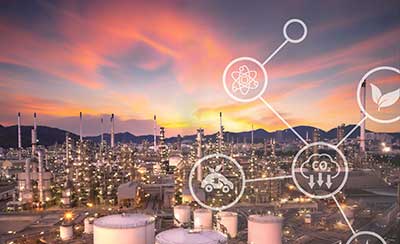Flipping the energy grid: How Australia can achieve net-zero with a diversified approach

Achieving this goal requires a strategy that embraces all available technologies—solar, wind, nuclear, gas, and storage—while depoliticizing the approach to energy policy. By doing so, Australia can create a resilient and diversified energy grid capable of withstanding global shifts in supply and demand.
Moving beyond one-size-fits-all energy solutions
The push for renewable energy has accelerated in recent years, and for good reason. Solar and wind power offer cleaner alternatives to fossil fuels, and their cost-efficiency has made them appealing. But there’s no one-size-fits-all solution, and while renewables should form the backbone of Australia’s energy future, they can’t power the nation alone.
Solar, while cost-effective, is limited by the variability of its production peaks. Wind energy, both onshore and offshore, faces similar challenges in consistency. A more balanced approach is needed—one where renewable energy takes center stage but is complemented by other sources such as gas, nuclear, and hydropower. This diversified energy mix ensures that Australia can meet its energy needs while maintaining resilience against fluctuations in global energy markets.
Embracing technological diversity for grid resilience
Flipping the grid requires diversification, not just in terms of energy sources but also in geographic and technological variety. Despite the higher costs associated with offshore wind, the benefits, including proximity to major transmission infrastructure and more consistent energy generation, make it an important contributor to Australia’s energy future.
We need the capacity and supply diversity that offshore wind can provide. This approach moves away from the traditional “hub and spoke” model of energy generation, where centralized power plants distribute energy, towards a decentralized grid. Offshore wind benefits from different patterns of generation from onshore wind and avoids the land availability constraints often encountered on land. A more distributed system enhances energy security and allows for greater flexibility in meeting demand peaks.
The role of gas and nuclear in transitioning to net-zero
In the flipped energy grid, renewables like solar and wind are bolstered by flexible, dispatchable sources of energy that can fill in gaps when renewable generation dips. Gas-fired power plants play a key role as a transitional technology, especially as Australia phases out coal. While green hydrogen holds promise as a future energy source, it’s currently too expensive to be deployed at scale for use in power generation. Gas remains critical because we need something to bridge the gap until carbon emissions free technology and storage can fully meet demand.
Other countries have successfully integrated nuclear power as a part of a diverse energy mix. Traditionally, this integration has been baseload energy, major investments in infrastructure, skills, regulatory frameworks, and political consensus are required in Australia to fully embrace nuclear energy. Therefore, this would be a long-term possibility rather than an immediate solution. If Australia were to adopt nuclear energy, it could serve as a valuable tool to work hand in hand with renewable energy generation to meet both baseload and peak demand periods without relying on fossil fuels. Further study to create a diverse carbon-free energy mix in Australia is worth public study.
Storage: The missing link in a renewable energy future
One of the biggest hurdles to achieving a fully renewable energy grid is the lack of cost-effective, long-duration storage solutions. While Australia has made significant strides in short-duration energy storage, such as lithium-ion batteries that can shift solar generation from midday to evening peaks, these systems are not yet cost effective for storing energy for the full 24-hour cycle. Long-duration storage is the missing link; without adequate storage, renewable energy cannot reliably power essential infrastructure and industry 24 hours a day.
Bridging this gap requires investment in a broad mix of storage technologies, including batteries and pumped hydro, to support variable renewable energy generation. By combining solar, wind, and storage solutions, Australia can build a power generation system that meets most of the nation’s near-term energy needs. However, until long-duration storage becomes more affordable, fossil fuels like gas will continue to play a role in ensuring grid stability during periods of peak demand.
Depoliticizing energy policy for a united path forward
Perhaps the most critical element is the call to depoliticize the energy debate in Australia. The country has witnessed intense political wrangling over the future of its energy landscape, particularly around controversial technologies like nuclear and offshore wind, but this divisiveness is counterproductive to achieving net-zero. Every source of energy should be on the table, and policymakers must focus on the technological and environmental imperatives rather than partisan rhetoric.
Australia’s energy future must be built on long-term, bipartisan planning that transcends election cycles. This requires policymakers to take a holistic view of the energy mix, one that incorporates renewables, fossil fuels, and emerging technologies like hydrogen and advanced nuclear solutions (such as SMRs). The Australian Energy Market Operator (AEMO) already plays a crucial role in long-term energy planning through its Integrated System Plan (ISP), this process should be further insulated from political interference to ensure a consistent and strategic path forward.
A resilient, decarbonized future is within reach
Australia’s path to net-zero is complex, but it’s achievable with the right approach. Our vision at Hatch for a flipped energy grid, where renewables lead and are supported by a diverse mix of energy sources and storage solutions, offers a pragmatic and resilient roadmap. By embracing technological diversity, depoliticizing energy policy, and investing in long-duration storage, Australia can build an energy system that meets its decarbonization goals and ensures energy security for future generations.
The time to act is now.
Hatch is enhancing public knowledge about the diverse power generation options available and their respective costs and benefits. By fostering an informed industry, we’re empowering experts and the general population to collectively make better decisions for our sustainable energy future. Visit our insights page to learn how we are responding to the energy transformation and championing a lower carbon future.
